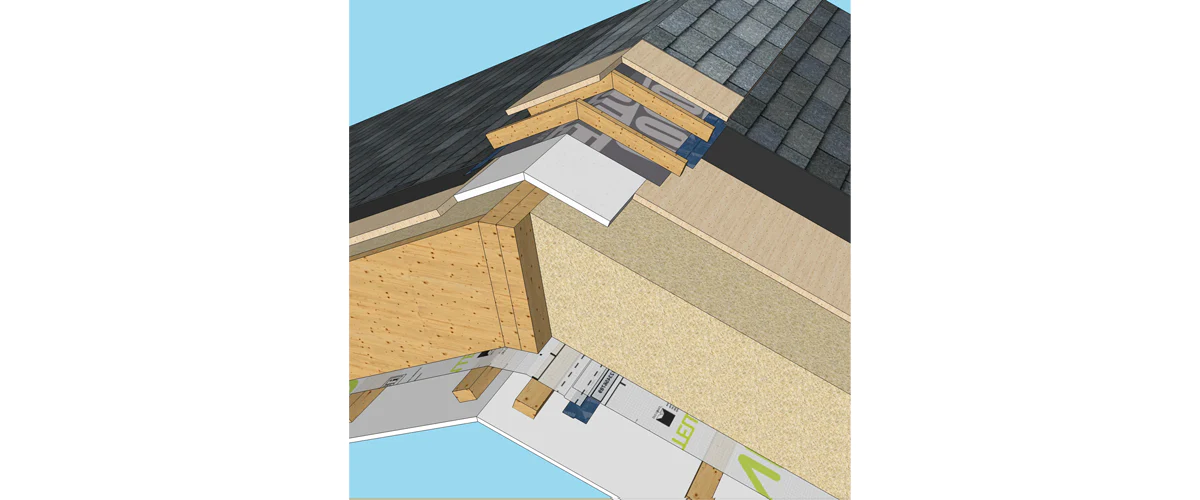
"Classic Ridge Rot" documented by the Building Science Corporation in Alaska
Planes can fly safely with one engine. And you can keep your pants up with just a belt. But if you're looking to be protected from fools, then adding suspenders to the belt might be what sets you free. So while we've previously outlined the essential importance of inboard airtightness and vapor control and have specifically written on The 8 Golden Rules for Foam-Free Unvented Asphalt Shingled Roofs - you're still looking for that vent. And admittedly, we really should vent all our walls and roofs on the exterior as described in our blog post A high performance roof should be vented – how to do this properly, for maximum protection. Yet sometimes venting isn't in the cards - due to cost or existing conditions for example ...and you're still looking for that vent.
Interestingly, as Joe Lstiburek of the Building Science Corporation has pointed out in BSI-088: Venting Vapor, the moisture damage found in unvented roofs is often at the ridges - using SIP panels in Alaska, and cellulose roof in Northern California in his Building America Report 1511 with Kohta Ueno, as illustrations.
Again, tested and verified inboard airtightness with smart vapor control, following the 8 Golden Rules, will eliminate this problem. But when you're still looking for the suspenders, Joe identifies a great set: the ridge vapor diffusion vent.

Ridge Vapor Vent aka "Vapor diffusion port" (adapted from BSC)
Like draining an infection, the ridge vapor vent is a release valve at the point of potential highest moisture concentration. The ridge vapor vent is formed by holding/cutting back the vapor retarding OSB/plywood sheathing and replacing it strapping on top of rafters or exterior grade gypsum board. Over the GWB provide vapor open waterproof and airtight SOLITEX Mento 3000 / ADHERO, taping the membrane at the perimeter with TESCON VANA and sealing any fastener penetrations with TESCON NAIDECK. Then install the ridge roofing on furring strips - forming a mini back vented roof.

The IRC2021 has now included this Vapor Diffusion port in the code for Climate zones 1-3 (guess there is condensation risk in some of those zones after all...) See R806.5 Unvented attic and unvented enclosed rafter assemblies. Note that the code requires 20 perms for such ports. Of course it is MUCH more important to have an actual (monolithic) truly waterproof and actively vapor open membrane - that is correctly detailed and installed. As RULE NR1 remains that it is essential to keep the water out of the assembly! Then make it airtight and then concern yourself with vapor. More info in drawing 2.4.1.E of Wood frame retrofit Smart Enclosure CAD files.



